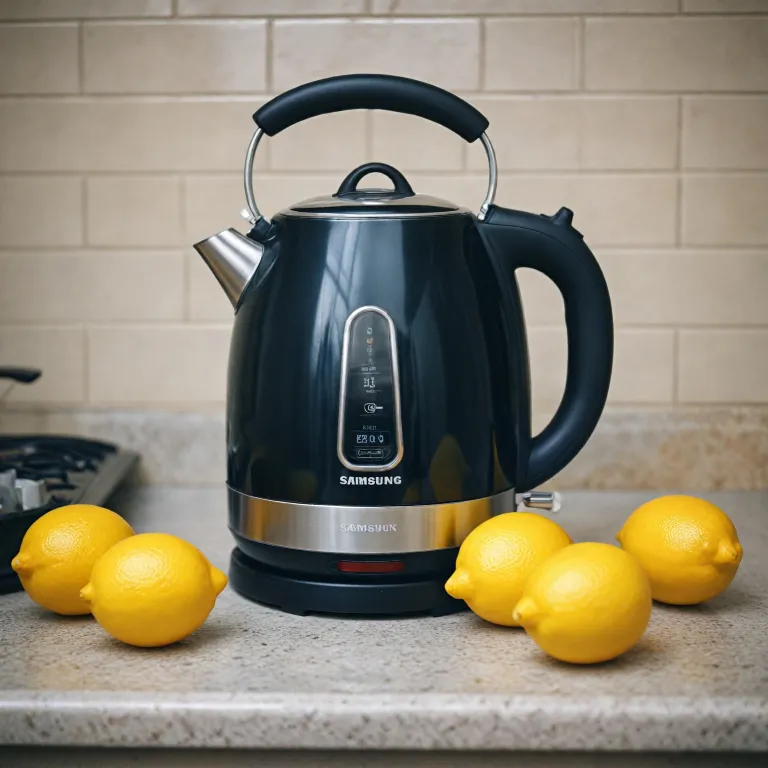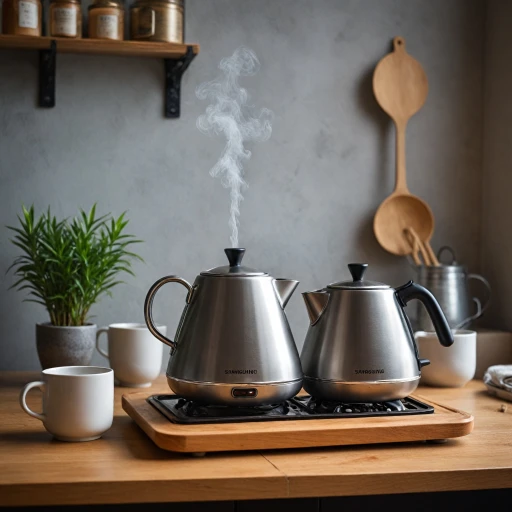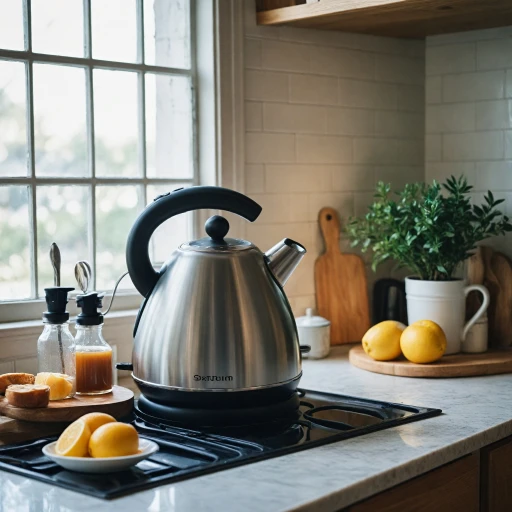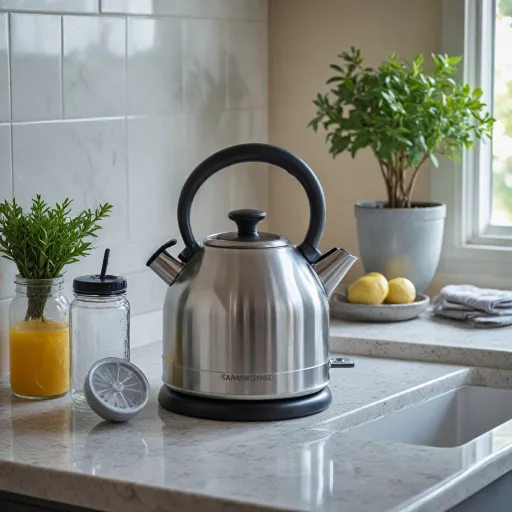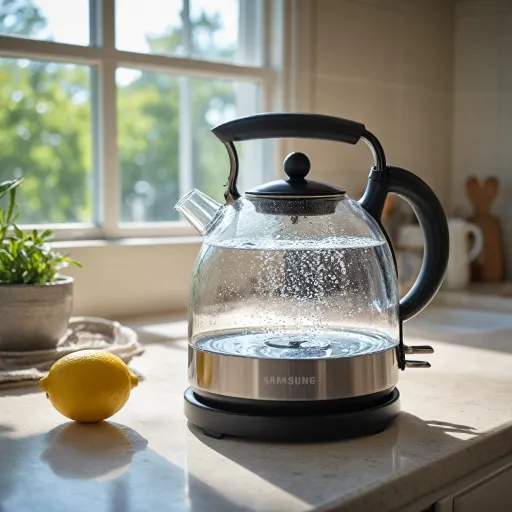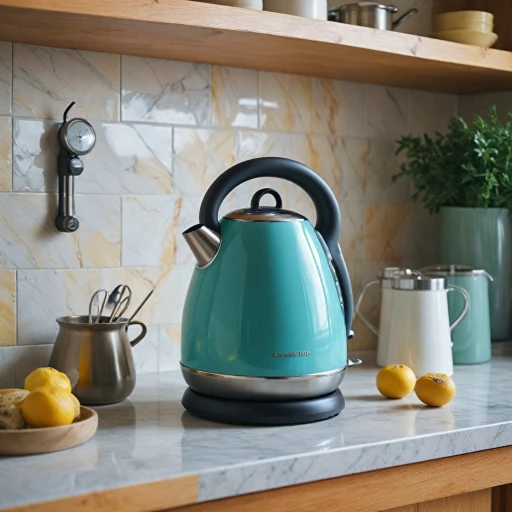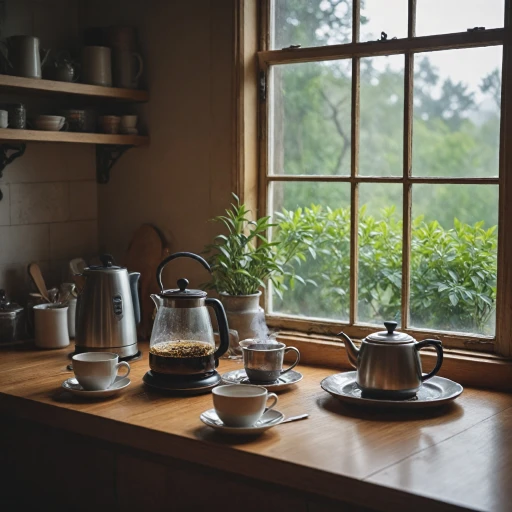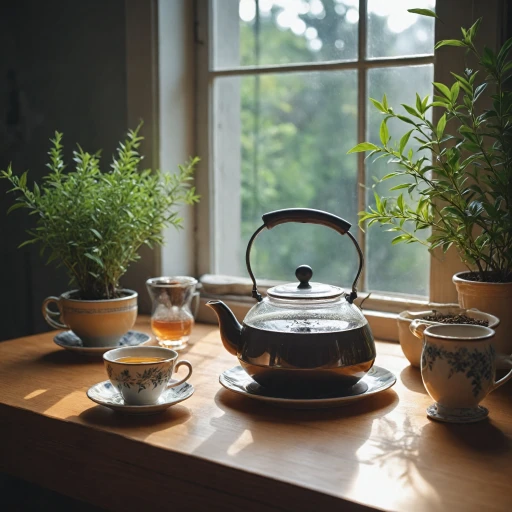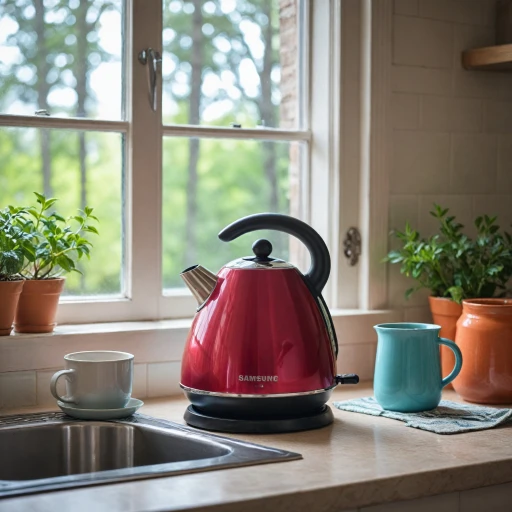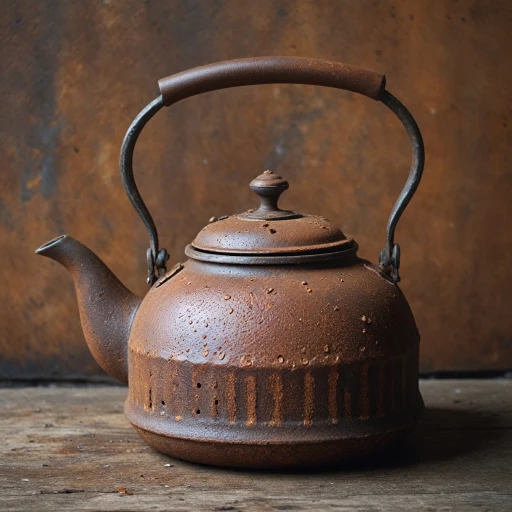
Understanding the Importance of Descaling
The Significance of Regular Descaling
Regular descaling is integral to maintaining the health and efficiency of your electric kettle. As water, particularly hard water, passes through your kettle, it can leave behind mineral deposits often referred to as limescale. This build-up of calcium carbonate is not only unsightly but can impact your kettle's performance and lifespan.
Understanding why it's crucial to descale your kettle can be the first step towards a better tea or coffee experience. As limescale accumulates on the kettle's heating element, it requires more energy to bring the water to a boil. This not only affects the taste of your tea or coffee but also increases your energy bills over time.
The impact goes beyond energy efficiency. When limescale builds up inside your electric tea kettle, it can potentially break down the materials, make cleaning more arduous, and in severe cases, lead to rust. Addressing rust and understanding the underlying causes can prolong the life of your appliance and ensure every cup of tea brewed is just right. For more insight into the causes and solutions, explore this detailed guide on rust in tea kettles.
By incorporating a regular descaling routine using natural descaling solutions like white vinegar or citric acid, you can ensure that your kettle remains efficient and clean. Other methods such as baking soda or using a vinegar solution followed by a gentle polish with a microfiber cloth can further enhance the sparkle and efficiency of your appliance.
Signs Your Kettle Needs Descaling
Recognizing the Need for Descaling
Descaling an electric kettle is a necessary task often prompted by certain signs that can be observed inside your appliance. Ignoring these signs can affect the longevity of your kettle and the quality of your boiled water, impacting your favorite tea or coffee experience.- Mineral Deposits: The accumulation of mineral deposits, or limescale, can usually be seen as white or chalky spots on your stainless steel or copper kettle interior. These hard water spots are common when using water with high mineral content.
- Discoloration: Kettles, whether they're stovetop tea kettles or electric models, may show discoloration if limescale is present. This discoloration can appear as a dull or patchy finish inside the kettle.
- Reduced Performance: If your kettle takes longer to boil or if the water doesn't reach the right temperature, it might be time to descaling. To learn more about maintaining optimal temperature, refer to this post on understanding the role of a pot holder for electric kettles.
- Unpleasant Taste or Odor: Water may taste bad or emit an unusual smell, often due to mineral buildup. This can affect the taste of your tea kettle brews or coffee maker uses, making regular cleaning essential.
Natural Descaling Methods
Clean Your Kettle with Natural Ingredients
Your electric kettle or stovetop tea kettle can accumulate mineral deposits over time, particularly if you have hard water. These deposits, often seen as limescale inside the kettle, can affect the taste of your tea or coffee and even reduce the efficiency of boiling water. Fortunately, cleaning your kettle with natural descaling methods is simple and effective. Here we explore how to use household solutions naturally found in your kitchen.
White Vinegar: This common household cleaner is adept at tackling mineral deposits. Create a solution by mixing equal parts of water and white vinegar. Pour this into your electric kettle, ensuring it covers the affected areas, and then let it sit for at least an hour. You can then boil the mixture for enhanced cleaning, but remember to let it cool before scrubbing the inside of your kettle with a sponge or cloth. Once the stains have loosened, rinse thoroughly several times to get rid of any vinegar smell.
Lemon Juice: If you prefer a more pleasant aroma, lemon juice is an excellent cleaner for your tea kettles. The acidity in lemon is a natural limescale remover. Fill your kettle with a mixture of lemon juice and water, leave it to sit for around an hour, and then bring it to a gentle boil. After boiling, scrub inside kettle gently with a soft sponge, rinse well, and enjoy your fresh kettle water.
Baking Soda: Another effective cleaner is baking soda. It acts as a mild abrasive, helping polish kettle interiors like copper or stainless steel. To use, dissolve a tablespoon of baking soda in water, fill your kettle, and boil the solution. Let it rest once it has cooled. Use a microfiber cloth to scrub the interior gently to remove any remaining mineral deposits, and rinse thoroughly.
Citric Acid: For those who have it on hand, citric acid is a powerful descaling agent. Dissolve a tablespoon in water, boil the solution in your electric kettle, then let it cool. As always, a gentle scrub and a few rinsing cycles will ensure that your kettle is spotless.
Natural descaling methods are not only effective but also eco-friendly and safe for use in your electric tea and coffee makers. For more tips on achieving that perfect brew temperature, visit our detailed blog link.
Commercial Descaling Products
Exploring the World of Commercial Products for Descaling
For those who prefer a more straightforward approach to battling limescale in their electric kettles, commercially available descaling products come as a blessing. They are specifically formulated to target and dissolve those stubborn mineral deposits that tend to accumulate over time in tea kettles, coffee makers, and other appliances. Commercial descalers often come with precise instructions, ensuring that you can effectively manage the issue without the guesswork involved in DIY solutions. Here's why people opt for these specialized cleaners:- Efficiency: Commercial products provide a fast and reliable way to clean the inside kettle of an electric tea or stovetop model. This is particularly advantageous if you rely on your kettle for daily coffee or tea rituals.
- Convenience: Purchasing a descaling solution from a trusted brand often means it is readily available when needed. This eliminates the need to mix household ingredients like vinegar or lemon juice.
- Specialization: Some descalers are tailored for specific materials, such as stainless steel or copper kettles, ensuring they won't damage the kettle interior.
Step-by-Step Descaling Process
Gather Your Supplies
Before you begin the descaling process, make sure you have all the necessary items on hand. You'll need white vinegar or lemon juice, a soft sponge or microfiber cloth, and a clean cloth for polishing. If you prefer a commercial cleaner, have that ready as well. For tougher limescale, baking soda can be a helpful addition.
Prepare the Descaling Solution
Mix equal parts of water and white vinegar or lemon juice to create your descaling solution. This natural mixture is effective in breaking down mineral deposits inside your electric kettle. If you're using a commercial product, follow the instructions on the label for the correct dilution.
Boil the Solution
Pour the solution into your kettle, filling it halfway. Turn on the kettle and let it boil. This step helps loosen the limescale and mineral deposits that have built up inside the kettle. Once boiled, let the solution sit for about 15-20 minutes to ensure it effectively cleans the kettle interior.
Rinse Thoroughly
After the solution has done its job, pour it out and rinse the kettle thoroughly with fresh water. It's crucial to remove any vinegar or lemon juice residue to prevent any lingering taste in your tea or coffee. Repeat the rinsing process a couple of times to ensure the kettle is completely clean.
Clean the Exterior
While the inside is soaking, take the opportunity to clean the exterior of your electric kettle. Use a damp sponge or microfiber cloth to wipe down the outside, paying special attention to any stains or fingerprints. For stainless steel kettles, a gentle polish with a clean cloth can restore their shine.
Final Touches
Once the kettle is clean and dry, inspect it for any remaining mineral deposits. If necessary, repeat the descaling process or use a bit of baking soda on a damp sponge to tackle stubborn spots. Finally, dry the kettle thoroughly with a clean cloth before using it again.
Preventive Measures to Reduce Scale Build-Up
Maintaining a Scale-Free Kettle
Keeping your electric kettle clean and minimizing limescale buildup is essential for enjoying fresh-tasting water, whether for your morning coffee or a relaxing tea. Here are some preventive measures you can adopt:- Regular Cleaning: Make it a habit to clean your kettle regularly. Wipe down the exterior with a microfiber cloth and polish the stainless steel with a suitable cleaner. Remember, a well-maintained kettle enhances both aesthetics and functionality.
- Use Filtered Water: Hard water contains high levels of minerals that contribute to limescale formation. Consider using filtered water in your electric tea kettle to reduce mineral deposits inside.
- Boil Only Required Water: Avoid boiling more water than you need. Excessive boiling increases the concentration of minerals as water evaporates, leading to faster scale buildup.
- Rinse after Each Use: After using the kettle, rinse the inside with fresh water. This simple step helps remove any residual minerals that were not deposited as limescale.
- Add a Descaling Solution Periodically: Even when preventative measures are in place, it’s beneficial to use a natural descaling solution occasionally. A mix of white vinegar or lemon juice with water can be boiled in the kettle once every few weeks to further protect your appliance from stubborn deposits.
- Wipe with a Soft Cloth: After boiling the vinegar or lemon juice mixture, let the kettle cool down and wipe the kettle interior with a damp sponge or soft cloth. This helps remove any remaining residue.
